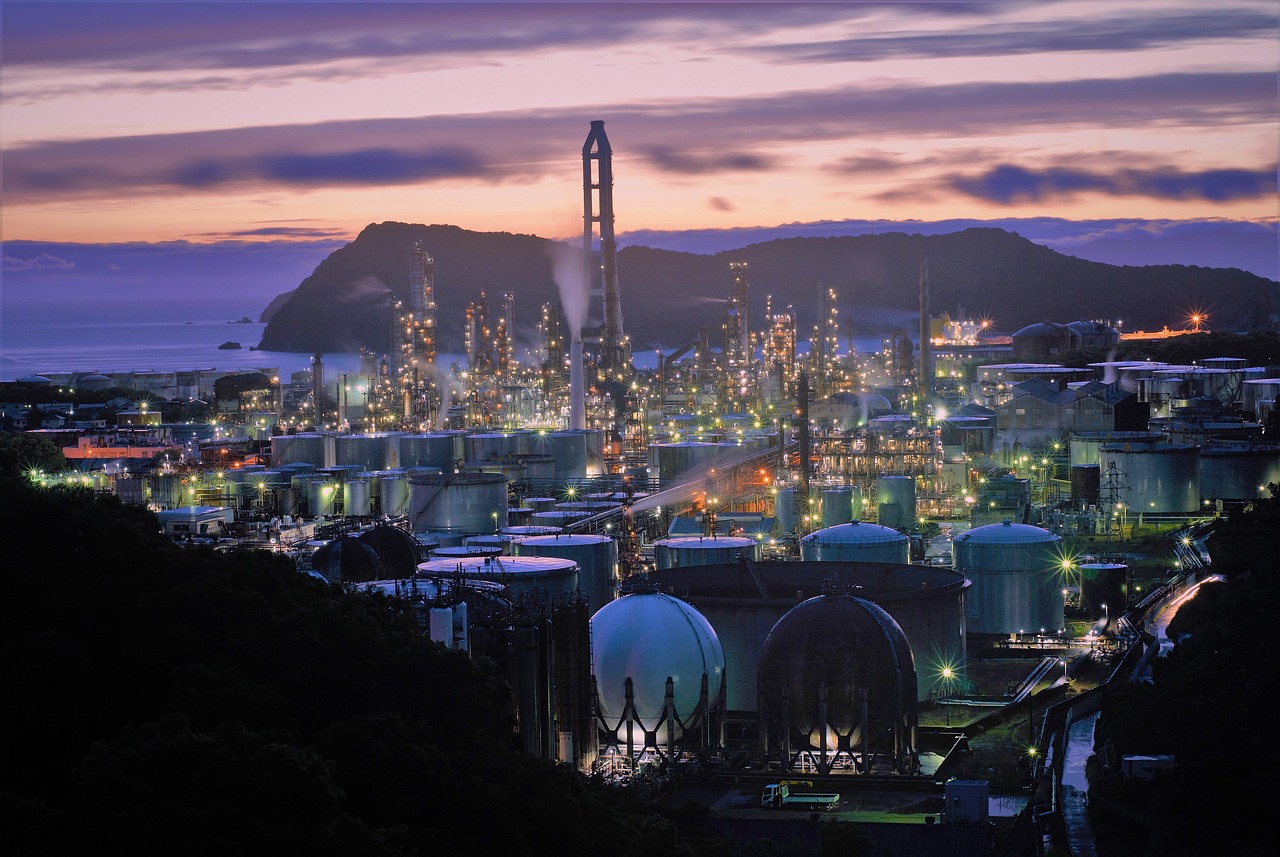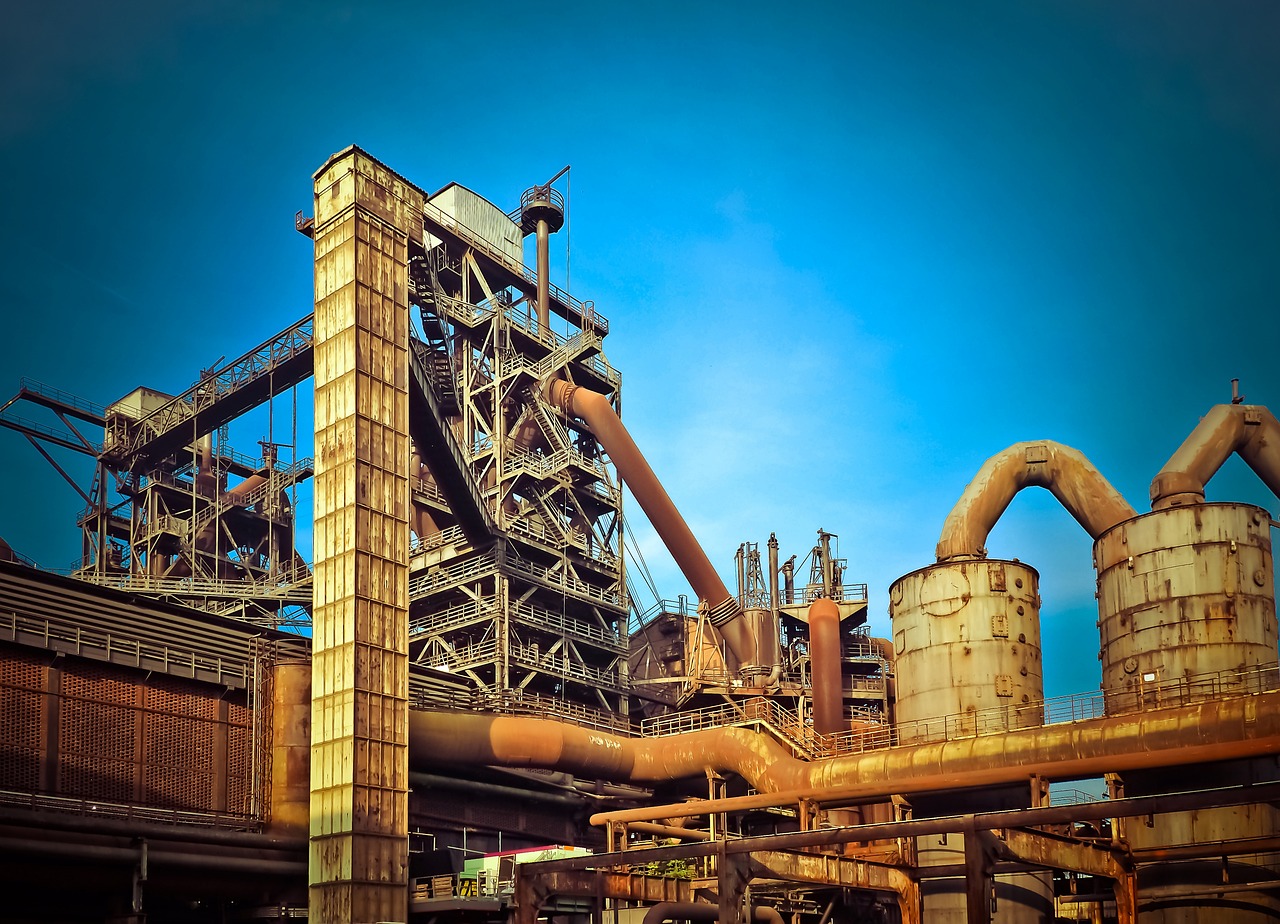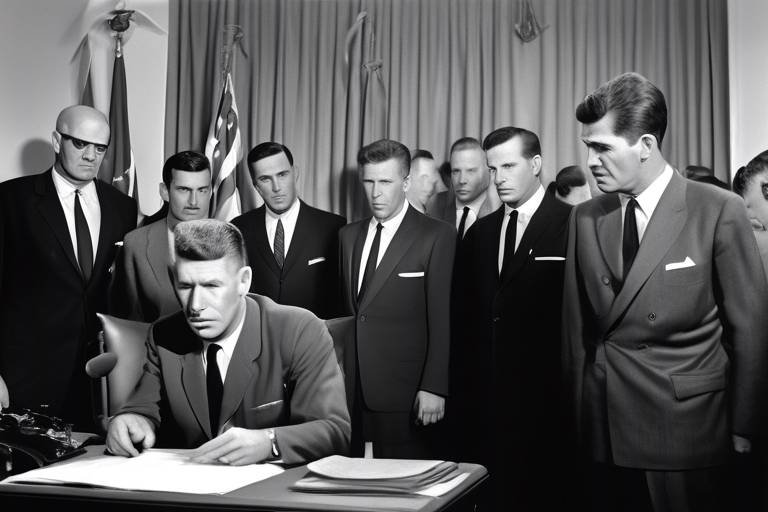The Impact of the Industrial Revolution on Global Trade
The Industrial Revolution, a pivotal period in history, had a profound impact on global trade, revolutionizing economies and societies worldwide. This transformative era marked a shift in trade patterns, laying the groundwork for modern globalization. The advancements brought by the Industrial Revolution reshaped the way goods were produced, transported, and exchanged, leading to significant changes in the global trade landscape.
Technological innovations played a key role in driving the changes witnessed during the Industrial Revolution. The introduction of steam power, railroads, and telegraphs revolutionized transportation and communication, making it easier to trade goods across continents. These advancements not only accelerated the speed of trade but also expanded the reach of markets, connecting distant regions in ways never seen before.
One of the most significant shifts during this period was the transition from cottage industries to large-scale factories. Mass production became the norm, fueling the rise of capitalism and the growth of multinational corporations. This shift in manufacturing and commerce led to increased trade volumes, as goods could now be produced in larger quantities and distributed more efficiently.
Colonialism and imperialism also played a crucial role in shaping global trade during the Industrial Revolution. Industrialized nations leveraged their technological superiority to expand their empires, exploit resources, and establish trade networks that spanned the globe. This era saw the emergence of dominant global powers, whose economic influence extended far beyond their borders.
As industrialization took hold, significant social changes accompanied the economic transformation. Urbanization became a hallmark of this period, as people flocked to industrial centers in search of employment opportunities. However, this influx of labor also led to exploitation and poor working conditions, sparking mass migration movements as individuals sought better prospects in burgeoning industrial hubs.
The Industrial Revolution marked the beginning of global market integration, connecting economies that were once isolated. This interconnectedness gave rise to complex trade networks and interdependencies, laying the foundation for the modern global economy. The flow of goods, capital, and labor across borders became increasingly seamless, shaping the way nations engaged in trade and commerce.
Despite its economic benefits, industrialization also had significant environmental consequences. Pollution, deforestation, and resource depletion became pressing issues as industries expanded rapidly. The long-term impacts of these environmental changes continue to affect global trade and sustainability, underscoring the need for responsible and sustainable practices in today's interconnected world.
Throughout this period of rapid change, resistance and social movements emerged in response to the challenges of industrialization. Workers, activists, and reformers advocated for labor rights, fair trade practices, and social justice reforms, pushing back against the exploitative practices that characterized early industrial economies. These movements laid the groundwork for future social and economic reforms that continue to shape our world today.
Reflecting on the legacy of the Industrial Revolution, it is clear that its impact continues to reverberate in the 21st century. Trade patterns, economic policies, and global inequalities bear the imprint of this transformative period, highlighting the enduring influence of the Industrial Revolution on the modern world. As we navigate the complexities of today's global economy, we are reminded of the profound changes set in motion by this pivotal era in history.

Technological Advancements and Trade
Exploring how the Industrial Revolution transformed global trade patterns, economies, and societies, shaping the modern world and setting the stage for globalization.
During the Industrial Revolution, technological advancements played a pivotal role in revolutionizing global trade. The introduction of innovations such as steam power, railroads, and telegraphs had a profound impact on transportation and communication, facilitating the exchange of goods on a scale never seen before. Steam power revolutionized maritime transportation, making it faster and more reliable, while railroads connected distant regions, enabling goods to be transported efficiently across vast distances. The invention of the telegraph further accelerated communication, allowing for real-time coordination of trade activities across continents.
These technological advancements not only transformed the speed and efficiency of trade but also opened up new markets and opportunities for merchants and entrepreneurs. The ability to transport goods quickly and communicate effectively over long distances laid the foundation for a truly globalized economy, where trade could flourish on an unprecedented scale.
Moreover, these advancements in transportation and communication paved the way for the emergence of multinational corporations that could operate across borders and continents. The Industrial Revolution not only reshaped the physical landscape with railways and factories but also revolutionized the way goods were produced, distributed, and consumed, leading to a fundamental shift in the global trade landscape.

Shifts in Manufacturing and Commerce
Exploring how the Industrial Revolution transformed global trade patterns, economies, and societies, shaping the modern world and setting the stage for globalization.
During the Industrial Revolution, there was a significant shift in manufacturing and commerce that revolutionized the way goods were produced and traded. The transition from small-scale cottage industries to large factories marked a pivotal moment in history. Factories enabled mass production on a scale never seen before, leading to increased efficiency and output.
This shift towards industrialization also gave rise to the concept of capitalism, where private ownership and profit motives drove economic activities. As a result, trade volumes soared, and new markets opened up both domestically and internationally. The emergence of multinational corporations further accelerated the pace of global trade, as companies sought to expand their reach and influence.
Technological advancements played a crucial role in these shifts. Innovations such as the steam engine revolutionized transportation, making it faster and more reliable. The development of railroads connected distant regions, facilitating the movement of goods to previously inaccessible markets. Additionally, the invention of telegraphs improved communication, allowing for real-time updates on trade transactions and market conditions.
With the advent of factories and mass production, the traditional artisanal approach to manufacturing gave way to a more mechanized and standardized process. This not only increased productivity but also lowered production costs, making goods more affordable and accessible to a larger population. The industrial revolution fundamentally transformed the way goods were manufactured, traded, and consumed, laying the foundation for the modern global economy.
Moreover, the shift towards industrialization had profound social implications. Urban centers grew rapidly as people migrated from rural areas in search of employment in factories. This led to the formation of a new working class, often subjected to harsh working conditions and long hours. The labor movement emerged in response to these challenges, advocating for better wages, working conditions, and labor rights.
In conclusion, the shifts in manufacturing and commerce brought about by the Industrial Revolution had far-reaching consequences that continue to shape the global economy today. The transition from cottage industries to factories, coupled with technological innovations and the rise of capitalism, set the stage for a new era of trade and commerce that would define the modern world.

Colonialism and Imperialism
Exploring how the Industrial Revolution transformed global trade patterns, economies, and societies, shaping the modern world and setting the stage for globalization.
During the Industrial Revolution, colonialism and imperialism played a significant role in reshaping global trade dynamics. Industrialized nations, armed with advanced technologies and superior military power, embarked on a quest for territorial expansion and resource exploitation. The conquest of colonies not only provided access to raw materials and new markets but also established strategic footholds for trade domination.
Colonial powers imposed their economic and political influence on colonized regions, often at the expense of indigenous populations. The establishment of trade networks, backed by colonial administrations, facilitated the flow of goods between colonies and the imperial homeland. This unequal exchange, characterized by the extraction of resources from colonies for the benefit of the colonizers, fueled economic growth in the industrialized world.
Furthermore, imperialism fueled competition among European powers for control over territories rich in natural resources and strategic trade routes. The scramble for colonies led to conflicts and power struggles that shaped global geopolitics and trade alliances. The exploitation of colonies for economic gain bolstered the industrial economies of the colonizers, driving the expansion of industries and the accumulation of wealth.
However, colonialism also sparked resistance movements and calls for decolonization as indigenous populations fought against oppressive colonial rule. The legacy of colonialism continues to impact global trade relationships, as former colonies navigate the challenges of post-colonial economic development and strive for equitable participation in the global marketplace.
1. How did the Industrial Revolution contribute to the rise of colonialism and imperialism?
The Industrial Revolution provided technological advancements that empowered industrialized nations to expand their empires, exploit resources, and establish trade dominance over colonies.
2. What were the economic consequences of colonialism on global trade?
Colonialism led to the unequal exchange of goods, with colonies supplying raw materials to the colonizers while being limited in their ability to develop their own industries, creating dependency and economic disparities.
3. How did resistance movements impact colonial trade networks?
Resistance movements against colonial rule challenged the exploitative trade practices of colonial powers, leading to calls for decolonization and the establishment of independent trade relationships among former colonies.

Impact on Labor and Migration
During the Industrial Revolution, the impact on labor and migration was profound, reshaping the social fabric of societies worldwide. As factories emerged and mass production became the norm, a significant shift occurred in labor patterns. Workers transitioned from traditional agricultural roles to industrial jobs in urban centers, leading to the rise of a new working class. This shift brought about urbanization on a massive scale, as people flocked to industrial hubs in search of employment opportunities and better wages.
Moreover, the industrialization process often led to labor exploitation, with long working hours, low wages, and poor working conditions being prevalent in many factories. Workers, including men, women, and children, faced harsh realities in the new industrial landscape, sparking movements for labor rights and improved working conditions. The need for a skilled workforce in factories also fueled mass migration, as individuals from rural areas moved to cities to seek employment in the booming industrial sector.
As industrialization spread globally, migration patterns shifted dramatically, with people moving not only within countries but also across continents in search of economic opportunities. This movement of labor played a crucial role in shaping the demographics of urban centers and fueling the growth of industrial economies. The influx of migrants brought diverse cultural influences to industrial cities, creating melting pots of traditions and languages.
Furthermore, the impact of industrialization on migration extended beyond labor movements. The demand for raw materials and resources to fuel industrial production led to increased international trade and the establishment of global supply chains. This, in turn, facilitated the movement of goods and people across borders, further integrating economies and shaping the interconnected world we live in today.

Global Market Integration
Exploring how the Industrial Revolution transformed global trade patterns, economies, and societies, shaping the modern world and setting the stage for globalization.
The Global Market Integration during the Industrial Revolution was a monumental shift that interconnected economies worldwide, laying the groundwork for the modern global economy. As steamships and railroads revolutionized transportation, goods could now traverse continents in a fraction of the time it once took. This rapid movement of products across borders created a web of interdependencies among nations, fostering trade networks that transcended traditional boundaries.
With the advent of telegraphs facilitating real-time communication, businesses could now coordinate transactions across vast distances with unprecedented speed. This newfound connectivity allowed for quicker decision-making, enabling companies to adapt to market fluctuations and seize opportunities in distant markets. The integration of global markets spurred competition, innovation, and specialization, driving economic growth and prosperity on a scale never seen before.
The Industrial Revolution not only reshaped the physical landscape with its factories and railways but also rewrote the economic map of the world. Nations that once operated in isolation were now linked through a complex network of trade routes, capital flows, and information exchange. The exchange of goods, capital, and ideas on a global scale transformed the way societies functioned, paving the way for the interconnected world we live in today.
Q: How did the Industrial Revolution impact global trade?
A: The Industrial Revolution revolutionized global trade by introducing technological advancements that enhanced transportation and communication, leading to increased trade volumes and the creation of multinational corporations.
Q: What were the social consequences of global market integration?
A: Global market integration during the Industrial Revolution led to urbanization, labor exploitation, and mass migration as people sought economic opportunities in industrial centers around the world.
Q: How does the legacy of the Industrial Revolution continue to influence trade patterns today?
A: The legacy of the Industrial Revolution is still evident in modern trade patterns, economic policies, and global inequalities, highlighting the enduring impact of this transformative period on the global economy.

Environmental and Resource Impacts
Exploring how the Industrial Revolution transformed global trade patterns, economies, and societies, shaping the modern world and setting the stage for globalization.
The Industrial Revolution brought about significant environmental and resource impacts that continue to resonate in the modern world. As industrialization surged, factories spewed pollutants into the air and water, leading to widespread pollution that affected both local communities and ecosystems. The rapid expansion of industries also led to deforestation as timber was needed for construction, fuel, and manufacturing processes.
Moreover, the increased demand for resources like coal, iron, and other raw materials resulted in resource depletion and environmental degradation on a global scale. The relentless pursuit of profit and production during this era often came at the expense of environmental sustainability, setting a precedent for the challenges we face today in balancing economic growth with ecological preservation.
These environmental and resource impacts of the Industrial Revolution underscore the interconnectedness of industrial activities with the natural world, highlighting the urgent need for sustainable practices and environmental stewardship in contemporary trade and economic systems.

Resistance and Social Movements
During the Industrial Revolution, the rapid changes in technology and labor practices sparked various forms of resistance and social movements. Workers faced harsh conditions in factories, with long hours, low wages, and dangerous working environments. In response, labor unions began to emerge, advocating for better working conditions, fair wages, and the right to organize. These movements aimed to address the exploitation of workers and push for reforms that would protect their rights and improve their quality of life.
One notable example of resistance during this period was the Luddite movement, where skilled textile workers protested against the introduction of machinery that threatened their livelihoods. The Luddites believed that industrialization would lead to job losses and lower wages, prompting them to destroy machines in factories as a form of protest. This movement highlighted the tensions between technological advancement and its impact on traditional industries and skilled labor.
Additionally, social reformers and activists like Karl Marx and Friedrich Engels advocated for workers' rights and the redistribution of wealth in society. Their writings, including the Communist Manifesto, critiqued the capitalist system and called for a more equitable distribution of resources. These ideas laid the foundation for socialist and communist movements that sought to challenge the inequalities perpetuated by industrial capitalism.
As industrialization spread across the globe, so did the resistance to its negative consequences. In countries like the United States and England, labor strikes and protests became common as workers demanded better treatment and fair wages. These movements played a crucial role in shaping labor laws, workplace safety regulations, and social welfare programs that aimed to protect workers from exploitation and improve their living standards.
Overall, the resistance and social movements that emerged during the Industrial Revolution reflected the struggles of workers and activists against the injustices of the rapidly changing economic and social landscape. These movements laid the groundwork for future labor rights movements and social justice initiatives, leaving a lasting impact on the way we perceive work, labor rights, and social equality in modern society.

Legacy and Contemporary Relevance
Exploring how the Industrial Revolution transformed global trade patterns, economies, and societies, shaping the modern world and setting the stage for globalization.
The legacy of the Industrial Revolution continues to reverberate through modern-day global trade and economic systems. The advancements in technology and manufacturing processes pioneered during this era laid the foundation for the interconnected world we live in today. The Industrial Revolution not only revolutionized the way goods were produced and traded but also fundamentally altered societal structures and power dynamics.
In the contemporary context, the impacts of the Industrial Revolution are still visible in various aspects of global trade. The shift from manual labor to mechanized production methods introduced during this period has shaped modern manufacturing practices. The concept of mass production, a hallmark of the Industrial Revolution, remains a key driver of efficiency and productivity in today's global economy.
Furthermore, the emergence of multinational corporations can be traced back to the Industrial Revolution, as businesses expanded their operations across borders to capitalize on new markets and resources. The legacy of industrialization also extends to the concept of capitalism, which continues to influence economic policies and trade relationships worldwide.
Moreover, the social and environmental impacts of the Industrial Revolution have lasting effects on contemporary trade practices. Issues such as labor rights, fair trade, and sustainable development have become central concerns in global trade discussions, reflecting the ongoing legacy of industrialization on societal values and ethical considerations.
As we navigate the complexities of the 21st-century global economy, it is essential to recognize the enduring legacy of the Industrial Revolution and its contemporary relevance. By understanding the historical roots of modern trade patterns and economic systems, we can better address the challenges and opportunities presented in today's interconnected world.
Frequently Asked Questions
- What were the key technological advancements that influenced global trade during the Industrial Revolution?
The Industrial Revolution brought about significant technological innovations such as steam power, railroads, and telegraphs. These advancements revolutionized transportation and communication, enabling the exchange of goods on a global scale and transforming trade patterns.
- How did the Industrial Revolution impact labor and migration?
The Industrial Revolution had profound effects on labor and migration. It led to urbanization, labor exploitation, and mass migration as people moved to industrial centers in search of economic opportunities. This shift in labor dynamics and migration patterns reshaped societies and workforce structures.
- What were the environmental consequences of industrialization on global trade?
Industrialization had significant environmental impacts, including pollution, deforestation, and resource depletion. These consequences continue to affect global trade and sustainability, highlighting the importance of considering environmental factors in trade practices and policies.
- How did resistance and social movements emerge in response to industrialization?
Workers, activists, and reformers responded to the challenges of industrialization by advocating for labor rights, fair trade practices, and social justice reforms. These movements played a crucial role in shaping labor laws, trade regulations, and social policies that continue to influence global trade practices today.
- What is the legacy of the Industrial Revolution in modern global trade?
The Industrial Revolution continues to shape trade patterns, economic policies, and global inequalities in the 21st century. Its legacy is evident in the structure of the modern global economy, highlighting the enduring impact of this transformative period on trade dynamics and international relations.



















